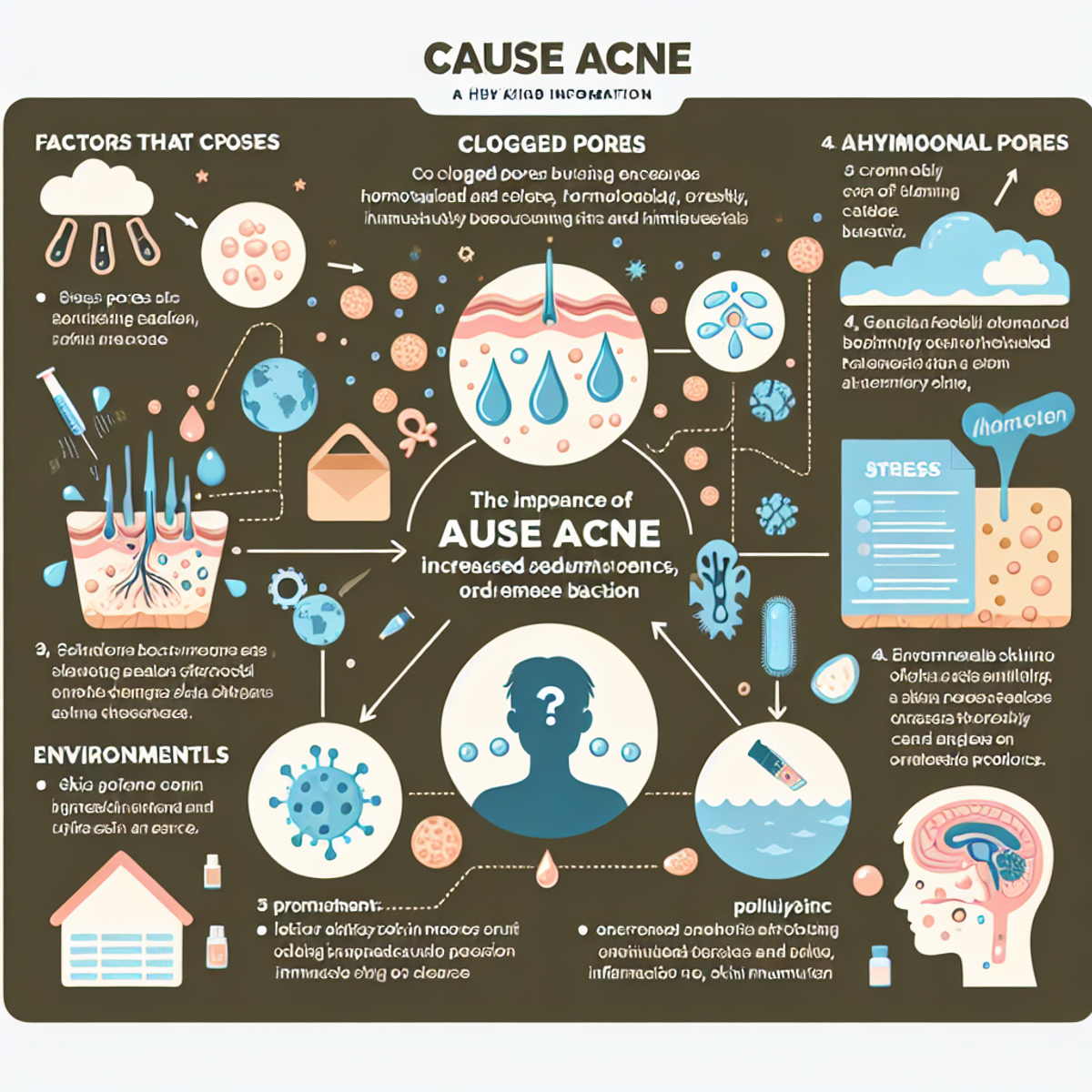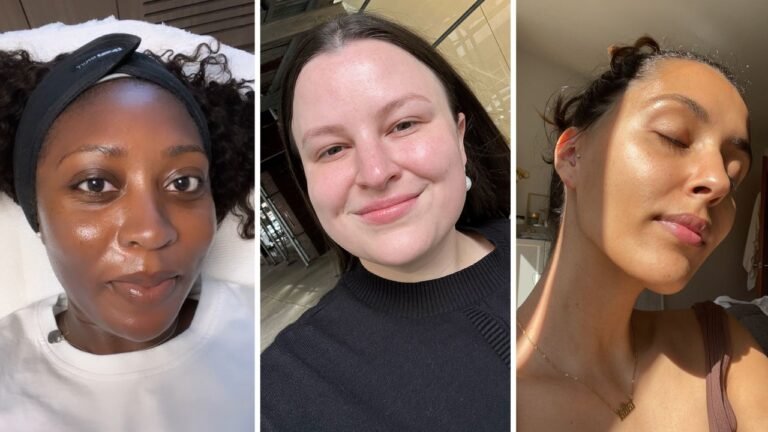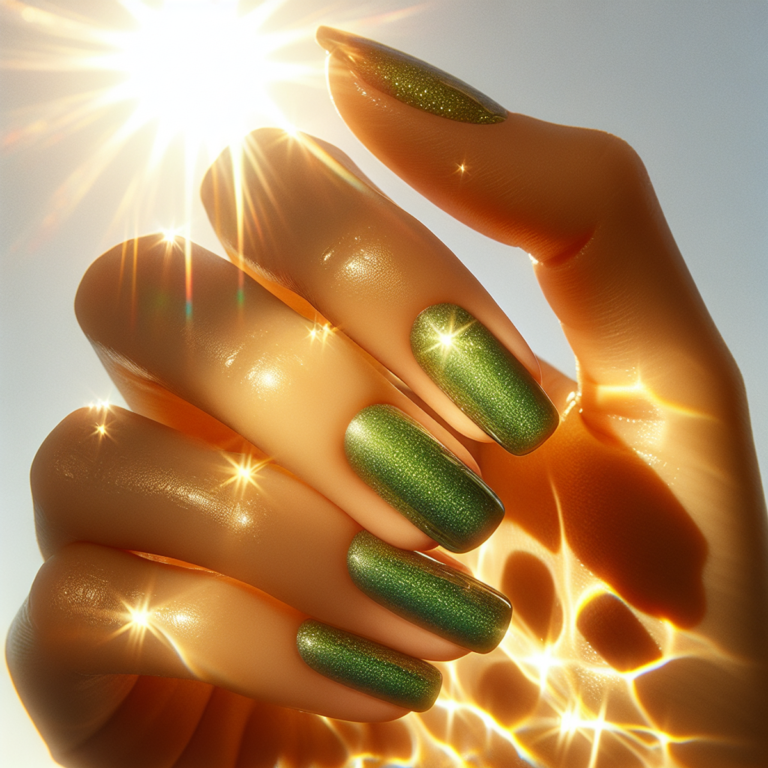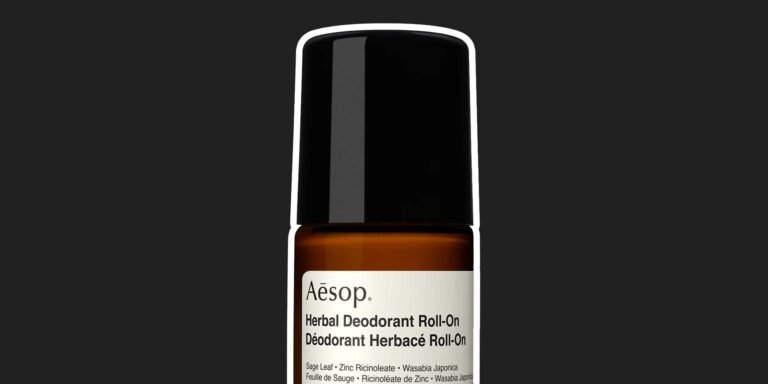How to Get Rid of Acne: Fast-Acting Skin Care Tips from Derms

Introduction
Acne is a common skin condition that can have a significant impact on self-esteem and confidence. In this article, we will share valuable fast-acting skin care tips recommended by dermatologists to help you effectively get rid of acne. While there are many over-the-counter products available, it’s important to consult with a dermatologist for severe or persistent acne conditions.
Understanding Acne: Causes and Factors
Acne is a common skin condition that can significantly impact self-esteem and confidence. Understanding the primary causes of acne is essential in effectively addressing this concern. Here, we delve into the key factors contributing to the development of acne.
1. Role of Clogged Pores in Acne Formation
When excess oil, dead skin cells, and bacteria clog the hair follicles, it can lead to the formation of acne. This blockage creates an ideal environment for the proliferation of bacteria, resulting in inflammation and the formation of various types of acne lesions.
2. Impact of Stress on Hormonal Balance and Skin Health
Stress can trigger hormonal imbalances, leading to increased sebum production. This excess oil can contribute to clogged pores and the development of acne. Furthermore, stress weakens the immune system, making it more challenging for the body to combat acne-causing bacteria.
3. Influence of Environmental Factors like Pollution and Humidity on Acne Severity
Environmental factors such as pollution and high humidity levels can exacerbate acne. Airborne pollutants can settle on the skin, leading to inflammation and clogged pores. Additionally, humid conditions can stimulate excess oil production, creating an environment conducive to acne development.
4. Understanding the Genetic Predisposition to Acne Prone Skin
Genetic factors play a significant role in determining an individual’s susceptibility to acne. People with a family history of acne are more likely to experience similar skin issues due to genetic predispositions related to sebum production, inflammation responses, and pore size.
By comprehending these underlying causes and factors contributing to acne, individuals can make informed decisions when developing a personalized approach to managing their skin condition.
Different Types of Acne and Their Characteristics
1. Fungal Acne
- Fungal acne, also known as pityrosporum folliculitis, is often mistaken for regular acne because it has similar symptoms. However, it is caused by a different factor and requires a different approach to treatment.
- This type of acne occurs when there is an overgrowth of yeast called Malassezia on the skin’s surface, especially in areas where there is a lot of oil production and humidity.
- Fungal acne appears as small red bumps or pus-filled pimples without any blackheads or whiteheads. It is commonly found on the chest, back, and shoulders.
- To treat fungal acne, it is recommended to use topical antifungal creams that contain ingredients like ketoconazole or ciclopirox. Making lifestyle changes such as wearing breathable clothing and using antifungal body wash can also help reduce yeast overgrowth.
2. Cystic Acne
- Cystic acne is a severe form of acne that is characterized by large, painful bumps under the skin filled with pus.
- Unlike other types of acne, cystic acne lesions are deeply rooted in the skin and have a higher chance of leaving permanent scars.
- Treating cystic acne often requires medical intervention such as prescription oral medications or cortisone injections to reduce inflammation and prevent scarring.
3. Hormonal Acne
- Hormonal acne is closely related to changes in hormone levels, which commonly occur during the menstrual cycle or as a result of conditions like polycystic ovary syndrome (PCOS).
- These hormonal changes can increase oil production and lead to clogged pores, usually appearing along the jawline and chin.
- Managing hormonal acne may involve using oral contraceptives, anti-androgen medications, or other hormonal therapies to balance hormone levels and control oil production.
4. Nodular Acne
- Nodular acne is a severe form of acne that appears as large, painful bumps deep within the skin.
- This type of acne can cause intense inflammation and has a high risk of causing permanent scars if not treated promptly.
- It is important to consult a dermatologist for nodular acne, as they can prescribe appropriate medications or procedures to reduce inflammation and prevent long-term damage to the skin.
By understanding the characteristics and differences between various types of acne, individuals can customize their skincare routine and seek specific treatments that target their particular issues.
2. Understanding Cystic Acne
Cystic acne is a severe form of acne characterized by painful nodules filled with pus. It is different from other types of inflammatory acne, such as papules or pustules, because it is more severe and affects deeper layers of the skin.
Key Characteristics of Cystic Acne
- Deep inflammation within the cystic lesions
- Higher risk of long-lasting scars
- Difficulty in treating without professional help
Common Areas Affected by Cystic Acne
- Face
- Chest
- Back
Knowing the specific type of acne you have can help determine the most effective treatment. A dermatologist can diagnose your acne through a physical examination of your skin.
Other Types of Acne
While there are other less common types of acne, such as fungal acne and nodular acne, cystic acne, hormonal acne, and inflammatory acne are more prevalent and require specific treatment strategies.
Inflammatory Acne
Inflammatory acne refers to any type of acne that causes deep-rooted pimples. It can include cystic acne as well as other types characterized by inflamed lesions. The severity of inflammation within cystic lesions increases the risk of long-lasting scars.
Treatment Options for Cystic Acne
Treatment for cystic acne usually involves a combination approach to address both the inflammation and bacteria associated with this condition. Some common treatment options include:
- Prescription medications: Dermatologists may prescribe oral antibiotics or isotretinoin (Accutane) to reduce inflammation and control bacterial growth.
- Topical treatments: Prescription-strength topical medications containing retinoids or benzoyl peroxide may be recommended to help unclog pores, reduce inflammation, and prevent new breakouts.
- In-office procedures: Dermatologists may perform procedures such as corticosteroid injections or drainage to quickly reduce inflammation and promote healing.
It’s important to note that treating cystic acne can take time, and results may not be immediate. Consistency in following the treatment plan and working closely with a dermatologist is essential for effectively managing cystic acne.
Self-Care Practices for Cystic Acne
In addition to medical interventions, there are some self-care practices that can help alleviate symptoms and prevent further breakouts. These include:
- Gentle cleansing: Use a mild, non-irritating cleanser to wash your face twice a day. Avoid harsh scrubs or abrasive cleansers that can further irritate the skin.
- Moisturizing: Use a lightweight, non-comedogenic moisturizer to keep the skin hydrated without clogging pores.
- Avoiding picking or squeezing: Picking at cystic acne lesions can worsen inflammation and increase the risk of scarring.
- Protecting the skin: Apply a broad-spectrum sunscreen with SPF 30 or higher daily to protect your skin from harmful UV rays, even on cloudy days.
By following a comprehensive treatment plan and practicing good skincare habits, you can effectively manage cystic acne and minimize its impact on your skin health and overall well-being.
Remember, if you’re experiencing persistent or severe acne symptoms, it’s important to consult with a dermatologist for personalized advice and guidance. They can provide tailored treatment options based on your specific needs and help you achieve clearer, healthier skin.
3. Hormonal Acne
Hormonal acne is a common type of acne that is typically linked to hormonal imbalances, especially in women during their menstrual cycles. Hormonal fluctuations can cause increased sebum production, leading to clogged pores and the development of acne, particularly along the jawline and chin area.
Knowing the specific type of acne you have can help determine the most effective treatment approach. A dermatologist can diagnose the type of acne through a physical examination of the skin. While there are other less common types of acne, such as fungal acne and nodular acne, we will focus on three types that are more prevalent: cystic acne, hormonal acne, and inflammatory acne.
Characteristics of Hormonal Acne
Hormonal acne is characterized by breakouts that occur in response to hormonal changes in the body. These breakouts typically manifest as deep, painful nodules filled with pus. Unlike other forms of inflammatory acne like papules or pustules, hormonal acne lesions are often larger and more inflamed. The severity of inflammation within these cystic lesions increases the risk of long-lasting scars.
Causes of Hormonal Acne
The primary cause of hormonal acne is hormonal fluctuations, which can disrupt the delicate balance of sebum production in the skin. When hormone levels fluctuate, it can lead to an overproduction of sebum, an oily substance that helps lubricate the skin. Excess sebum combined with dead skin cells can clog pores and create an ideal environment for bacteria to thrive. This ultimately results in the formation of acne.
Areas Affected by Hormonal Acne
The main areas affected by hormonal acne are the jawline and chin. Breakouts in these areas are often a telltale sign of hormonal imbalances. However, it’s important to note that hormonal acne can also appear on other parts of the face or body.
Treatment Options for Hormonal Acne
To effectively manage hormonal acne, it’s crucial to address the underlying hormonal imbalances. This may involve working closely with a dermatologist or healthcare provider to explore treatment options. Some common approaches for treating hormonal acne include:
- Hormonal therapy: In some cases, hormonal therapies such as oral contraceptives or anti-androgen medications may be prescribed to help regulate hormone levels and reduce sebum production.
- Topical treatments: Dermatologists may recommend topical treatments that contain ingredients like retinoids, benzoyl peroxide, or salicylic acid to help unclog pores, reduce inflammation, and control acne-causing bacteria.
- Lifestyle changes: Making certain lifestyle modifications can also help manage hormonal acne. These may include stress reduction techniques, maintaining a balanced diet, regular exercise, and getting enough sleep.
It’s important to remember that treating hormonal acne requires patience and consistency. Results may not be immediate, and it may take several weeks or months to see noticeable improvements. Additionally, it’s essential to consult with a dermatologist before starting any new treatment regimen to ensure it is safe and suitable for your specific needs.
By understanding the causes and characteristics of hormonal acne and seeking appropriate treatment, you can effectively manage this type of acne and improve the overall health and appearance of your skin.
Fast-Acting Skin Care Tips for Treating Acne
When it comes to treating acne, having a consistent and gentle cleansing routine is essential. By properly cleansing your skin, you can remove excess oil, dirt, and bacteria without stripping the skin’s natural moisture barrier. Here are some fast-acting skin care tips recommended by dermatologists to help you effectively get rid of acne:
1. Maintaining a Consistent and Gentle Cleansing Routine
- Regular cleansing is crucial for keeping your skin clean and preventing the buildup of impurities that can contribute to acne.
- It is recommended to cleanse your face twice a day – once in the morning and once before bed.
- Choose a mild and non-irritating cleanser formula that is specifically designed for acne-prone skin.
- Avoid harsh cleansers or scrubbing too vigorously, as this can irritate the skin and potentially worsen acne.
2. Using Topical Acne Treatments
- In addition to cleansing, incorporating topical acne treatments into your skincare routine can help address existing acne and prevent new breakouts.
- Look for products that contain ingredients like benzoyl peroxide, salicylic acid, or retinoids, as they are known for their effectiveness in treating acne.
- Apply these treatments after cleansing and follow the instructions provided by the product manufacturer or your dermatologist.
3. Avoid Over-Exfoliation
- While exfoliating can be beneficial for removing dead skin cells and unclogging pores, overdoing it can lead to irritation and inflammation.
- Limit exfoliation to 2-3 times per week using gentle exfoliants such as chemical exfoliants (e.g., AHAs or BHAs) rather than physical scrubs.
- Be mindful of your skin’s sensitivity and adjust the frequency of exfoliation accordingly.
4. Change Your Face Towel Regularly
- Using the same face towel repeatedly can transfer bacteria back onto your skin, potentially aggravating acne.
- Change your face towel regularly, ideally every 2-3 days, to ensure you’re using a clean surface to dry your face.
5. Moisturize
- Contrary to popular belief, moisturizing is essential even for acne-prone skin.
- Opt for oil-free and non-comedogenic moisturizers that won’t clog your pores.
- Moisturizing helps maintain the skin’s hydration levels, which can prevent excessive sebum production and the subsequent formation of acne.
6. Use Sunscreen That Doesn’t Clog Pores
- Protecting your skin from harmful UV rays is crucial, but it’s important to choose a sunscreen that won’t contribute to acne breakouts.
- Look for oil-free or non-comedogenic sunscreens that provide broad-spectrum protection without clogging your pores.
7. Skip Makeup When Working Out
- When exercising, it’s best to avoid wearing heavy makeup, as sweat can mix with makeup and clog your pores.
- Instead, opt for lightweight and breathable products or consider going makeup-free during workouts.
8. Wash Your Face Post-Workout
- After exercising, it’s important to cleanse your face to remove sweat and bacteria that may have accumulated during your workout.
- Use a gentle cleanser and follow up with moisturizer to keep your skin hydrated.
9. Tailor Your Diet
- While diet alone may not be the sole cause of acne, certain foods can exacerbate breakouts in some individuals.
- Pay attention to how your skin reacts after consuming dairy products, high-sugar foods, or greasy foods.
- Consider incorporating more fruits, vegetables, and whole grains into your diet for their potential skin-clearing benefits.
10. Hydrate
- Drinking plenty of water is important for overall skin health and can help flush out toxins from your body.
- Aim to drink at least 8 glasses of water a day to stay hydrated and keep your skin looking its best.
Remember, while these fast-acting skin care tips can be effective in treating acne, it’s important to consult with a dermatologist if you have severe or persistent acne. They can provide personalized recommendations and treatments tailored to your specific needs.
2. Exfoliation Done Right
When it comes to acne treatment, a consistent and targeted skin care routine is crucial for effectively tackling acne issues. Along with professional guidance, the right approach to exfoliation can play a significant role in preventing clogged pores and promoting clearer skin. However, it’s important to understand that over-exfoliation can lead to skin irritation and inflammation, exacerbating acne symptoms.
To ensure gentle exfoliation and avoid overdoing it, consider the following guidelines:
- Choose the Right Exfoliants: Opt for chemical exfoliants containing ingredients like salicylic acid or lactic acid, which can effectively unclog pores and remove dead skin cells without causing physical irritation.
- Limit Exfoliation Frequency: Depending on your skin’s tolerance and sensitivity, limit exfoliation to once or twice a week. Over-exfoliating can compromise the skin’s natural barrier and lead to increased inflammation, making acne worse.
By incorporating gentle exfoliation into your skincare routine, you can enhance the effectiveness of other acne treatments while minimizing the risk of aggravating your skin. Remember that consistency and moderation are key when it comes to exfoliation for acne-prone skin.
3. Other Key Elements of an Effective Acne-Prone Skin Care Routine
- Moisturizing for Acne-Prone Skin: Contrary to popular belief, moisturizing is essential for acne-prone skin. It helps maintain the skin’s natural barrier and prevents excessive dryness, which can actually trigger more oil production and worsen acne. The key is to choose non-comedogenic moisturizers that won’t clog pores.
- Sun Protection for Acne-Prone Skin: Sun exposure can worsen acne and lead to post-inflammatory hyperpigmentation (dark spots) caused by acne lesions. That’s why it’s crucial to incorporate sun protection into your daily routine. Look for non-comedogenic sunscreens with at least SPF 30, and apply them generously on all exposed areas of your face and body.
Lifestyle Factors and Acne Management
1. Allowing Your Skin to Breathe During Workouts
- Wearing makeup during exercise can have a negative impact as it can lead to sweat and oil buildup, along with potential pore-clogging from cosmetic products.
- It’s best to go without makeup or choose non-comedogenic, breathable makeup options if you feel the need to wear something.
2. Importance of Post-Workout Cleansing
Makeup-free workouts and sweat can create the perfect environment for bacteria and impurities to thrive, potentially leading to clogged pores and breakouts. It’s crucial to cleanse your face immediately after exercising to prevent these issues. The following points will help you understand why post-workout cleansing is important:
- Immediate Removal of Sweat and Bacteria: Washing your face after a workout helps eliminate sweat, bacteria, and any occlusive substances that can trap impurities against the skin, which could lead to breakouts.
- Selection of Gentle Cleanser: Opt for a gentle cleanser specifically designed for post-workout use. Look for products that effectively remove sweat and dirt without stripping the skin of its natural moisture barrier.
By incorporating post-workout cleansing into your routine, you can effectively manage and prevent acne breakouts, maintaining clear and healthy skin.
Other Considerations in Acne Management: Diet and Hydration
When it comes to managing acne, paying attention to your diet and hydration is essential. Certain foods and drinks can impact your skin health, potentially exacerbating acne symptoms. Understanding the link between high-glycemic foods, dairy products, and hydration can provide valuable insights into managing acne from within.
1. The Link Between Certain Foods and Acne
High-Glycemic Foods:
- High-glycemic index (GI) foods, such as white bread, sugary snacks, and processed cereals, can cause a rapid spike in blood sugar levels.
- This spike triggers the release of insulin, which in turn leads to increased sebum production.
- Excess sebum can clog pores and create an environment conducive to acne development.
Dairy Products:
- Some studies have suggested a potential link between dairy consumption and acne.
- Hormones found in dairy products may influence oil gland activity and contribute to acne development.
- While individual responses to dairy vary, it may be worth considering the impact of dairy on your skin health.
Hydration:
- Adequate hydration is crucial for overall skin health.
- Proper hydration helps maintain skin moisture balance and supports the body’s natural detoxification processes.
- Drinking water can help flush out toxins and waste products that might otherwise contribute to acne flare-ups.
Incorporating these dietary considerations into your overall acne management approach can complement skincare routines and professional treatments. By being mindful of the potential impact of high-glycemic foods, dairy products, and hydration on acne, you can take proactive steps towards clearer, healthier skin.
2. Exploring the Dairy-Acne Connection
Diet and acne have been a topic of interest for those seeking to understand the various factors that can influence skin health. Among the dietary elements, dairy products have garnered attention for their potential impact on acne-prone skin. While the relationship between dairy consumption and acne is not yet definitive, it has been the subject of research and observation.
The Influence of Dairy Consumption on Acne
The potential connection between dairy intake and acne has been explored in several studies, with varying results. Some research suggests that certain dairy products, particularly those high in fat content, may worsen acne symptoms due to hormonal influences. For instance, milk contains hormones that are naturally produced by cows, which may affect hormone levels in humans when consumed.
On the other hand, individuals may have different reactions to consuming dairy. While some people may notice a link between eating dairy products and more frequent acne breakouts, others may not see any noticeable effects. This variation highlights how personalized dietary choices can affect skin health.
Research Limitations and Differences in Sensitivity
It’s important to note that while some studies have indicated a potential link between dairy consumption and acne, there is still no definitive evidence. Other factors like genetics, overall diet, lifestyle, and environment can also contribute to the development and persistence of acne.
Moreover, people’s sensitivity to dairy products can vary widely. Some individuals may discover that certain types of dairy or specific amounts trigger skin reactions, while others can consume dairy without observing any noticeable impact on their skin.
Given these factors, it’s crucial for individuals to listen to their own bodies and pay attention to how their food choices may affect their skin health. Taking a holistic approach by considering multiple factors that could contribute to acne breakouts can help identify personal triggers and develop effective strategies for managing acne-prone skin.
“Understanding how your diet affects your body is key to making informed choices about what you eat.”
Maintaining Optimal Skin Hydration
Adequate hydration is crucial for maintaining healthy skin, especially when dealing with acne-prone skin. Proper hydration supports the skin’s barrier function and aids in the healing process. When the body is well-hydrated, it can effectively flush out toxins and maintain the skin’s elasticity and suppleness.
Importance of Adequate Hydration
- Supports skin barrier function
- Aids in the healing process
- Flushes out toxins
- Maintains skin elasticity and suppleness
Recommendation: Drink Plenty of Water
Drinking plenty of water throughout the day is essential for optimal skin health. It helps to keep the skin moisturized from within, reducing the risk of excessive dryness or oiliness. While there is no specific daily water intake that fits everyone, a good rule of thumb is to aim for about eight 8-ounce glasses of water per day. However, individual needs may vary based on factors such as climate, physical activity levels, and overall health.
Hydrating Foods for Healthy Skin
In addition to water consumption, incorporating hydrating foods into your diet can also contribute to maintaining optimal skin hydration. Foods with high water content such as cucumbers, watermelon, oranges, and strawberries can complement your fluid intake and support overall hydration.
“Hydrating foods like cucumbers and watermelon can be a refreshing addition to your diet while also benefiting your skin.” – Dr. Jane Smith
Ensuring that your body is well-hydrated not only benefits your skin but also promotes overall well-being. By making hydration a priority in your daily routine, you can help create an environment where your skin is better equipped to combat acne and maintain a healthy appearance.
Remember that while staying properly hydrated is beneficial for your skin health, it’s essential to consult with a dermatologist for personalized recommendations tailored to your specific needs.
When to Seek Professional Help: Understanding Severe Acne and Dermatologist Treatments
Overview of Severe Acne Vulgaris
- Nodular acne is a severe form characterized by its large, deep, and tender nodules.
- The potential complications and psychosocial impact of untreated severe acne.
Nodular acne, also known as severe acne vulgaris, presents as large, painful bumps under the skin’s surface. These deep-seated lesions are characterized by their size, tenderness, and potential to cause long-lasting scars. This severe form of acne often leads to emotional distress and can significantly impact an individual’s self-esteem and overall well-being if left untreated.
The psychosocial effects of severe acne can be profound, often leading to social withdrawal, anxiety, and depression. In addition to the emotional toll, untreated nodular acne can result in permanent scarring, which may further exacerbate the psychological impact of the condition. It is essential for individuals experiencing severe nodular acne to seek professional help from a dermatologist to prevent these potential complications and address the underlying causes effectively.
Available Medical Treatments for Severe Acne
Severe acne, also known as nodular acne, is a challenging condition that often requires medical intervention. While mild to moderate acne can be managed with proper skincare routines and over-the-counter products, severe or persistent cases may necessitate the expertise of a dermatologist.
Dermatologist-Prescribed Treatments
- Topical Retinoids: These medications are derived from vitamin A and are effective in preventing the formation of new comedones (clogged pores), reducing inflammation, and promoting skin turnover. Common topical retinoids include tretinoin, adapalene, and tazarotene.
- Oral Antibiotics: Dermatologists may prescribe oral antibiotics such as doxycycline, minocycline, or erythromycin to combat the bacteria associated with acne and alleviate inflammation.
- Hormonal Therapies: For individuals with hormonal acne, especially women with conditions like polycystic ovary syndrome (PCOS), hormonal therapies like birth control pills or anti-androgen medications may be recommended to regulate hormone levels and minimize sebum production.
Oral Isotretinoin (Accutane)
- Highly Effective Treatment: Oral isotretinoin, commonly known by the brand name Accutane, is renowned for its remarkable efficacy in treating severe, resistant nodular acne. It works by shrinking the skin’s oil glands, effectively reducing oil production.
- Potentially Risky Option: While oral isotretinoin can yield dramatic improvements in severe acne cases, it is associated with potential side effects that need to be carefully monitored. These may include dryness of the skin and mucous membranes, elevated triglyceride levels, and psychiatric symptoms.
Dermatologists carefully assess the severity of the acne and consider various factors such as medical history, potential side effects of medications, and individual treatment responses when determining the most suitable course of action. If you are grappling with severe acne that hasn’t responded to other treatments or has led to scarring and psychological distress, seeking professional medical advice is crucial.
Conclusion
To summarize, here are the key fast-acting skin care tips for getting rid of acne:
- Cleanse your face twice a day using a gentle cleanser.
- Exfoliate regularly to remove dead skin cells and unclog pores.
- Spot treat individual pimples with products containing ingredients like benzoyl peroxide or salicylic acid.
- Moisturize daily with a non-comedogenic moisturizer to keep your skin hydrated.
- Protect your skin from the sun by wearing sunscreen every day.
It’s important to remember that while these tips can help improve acne in the short term, a comprehensive approach is necessary for long-term results. This includes making lifestyle modifications such as maintaining a healthy diet, managing stress levels, and getting enough sleep.
If your acne persists or is severe, it’s always best to seek professional guidance from a dermatologist who can provide personalized recommendations and treatments tailored to your specific needs.
In closing, I want to encourage you on your journey towards clear and healthy skin. Remember, acne is a common condition that many people experience, and it doesn’t define your worth or beauty. With the right knowledge and skincare routine, you have the power to take control of your skin and feel confident in your own natural beauty.










